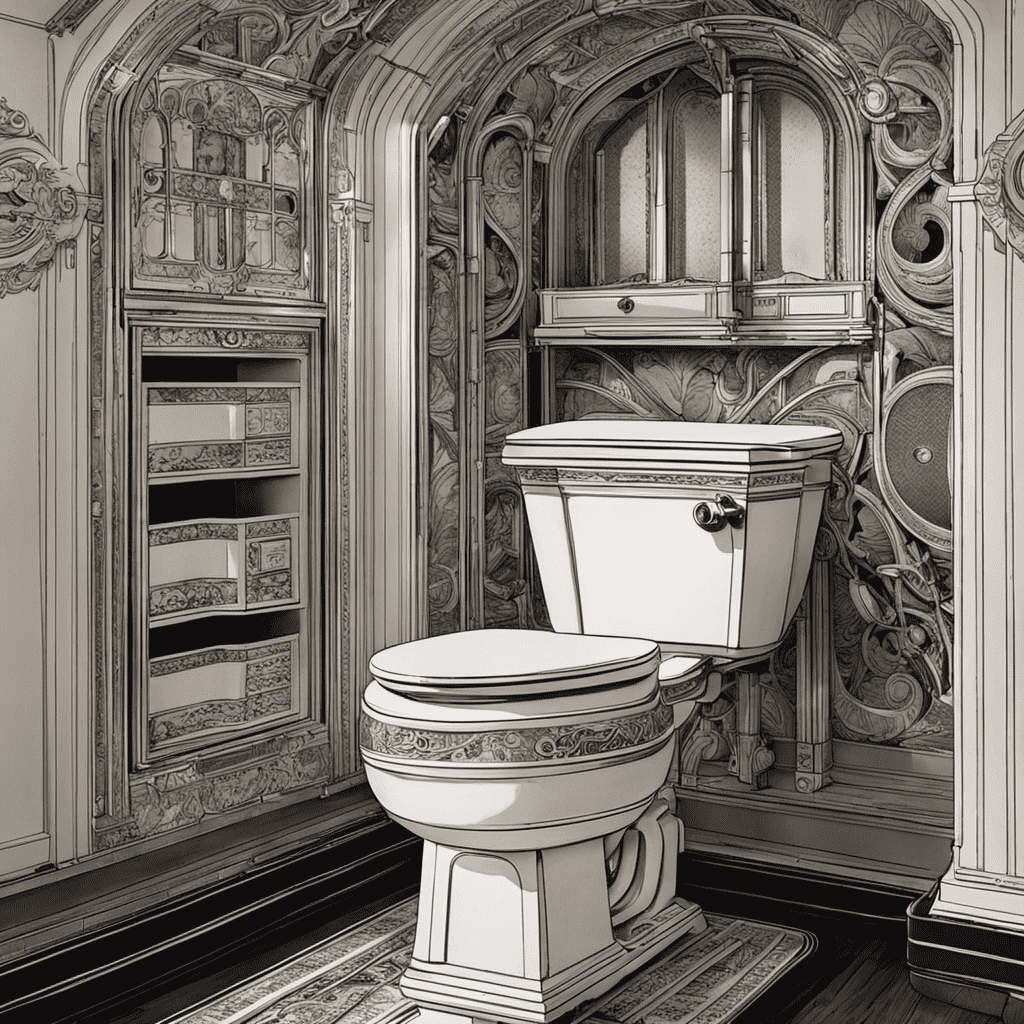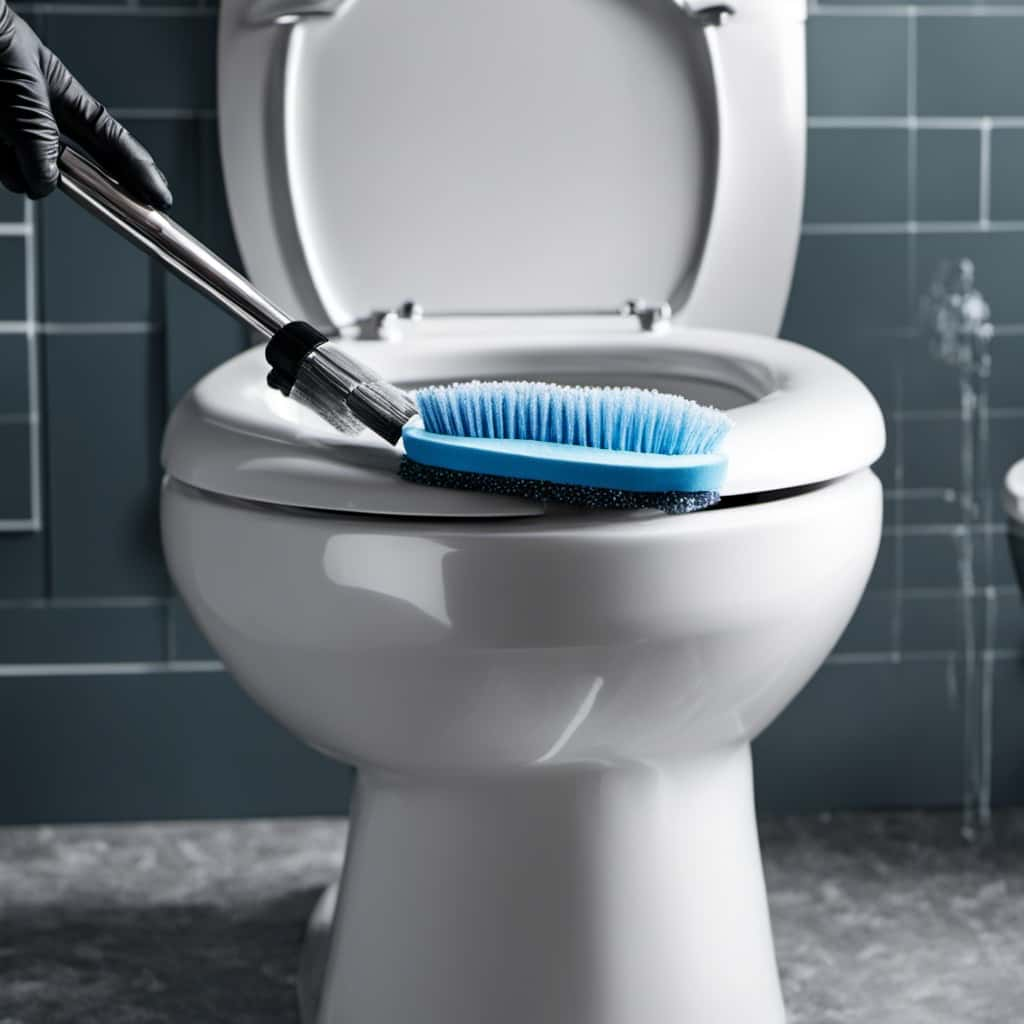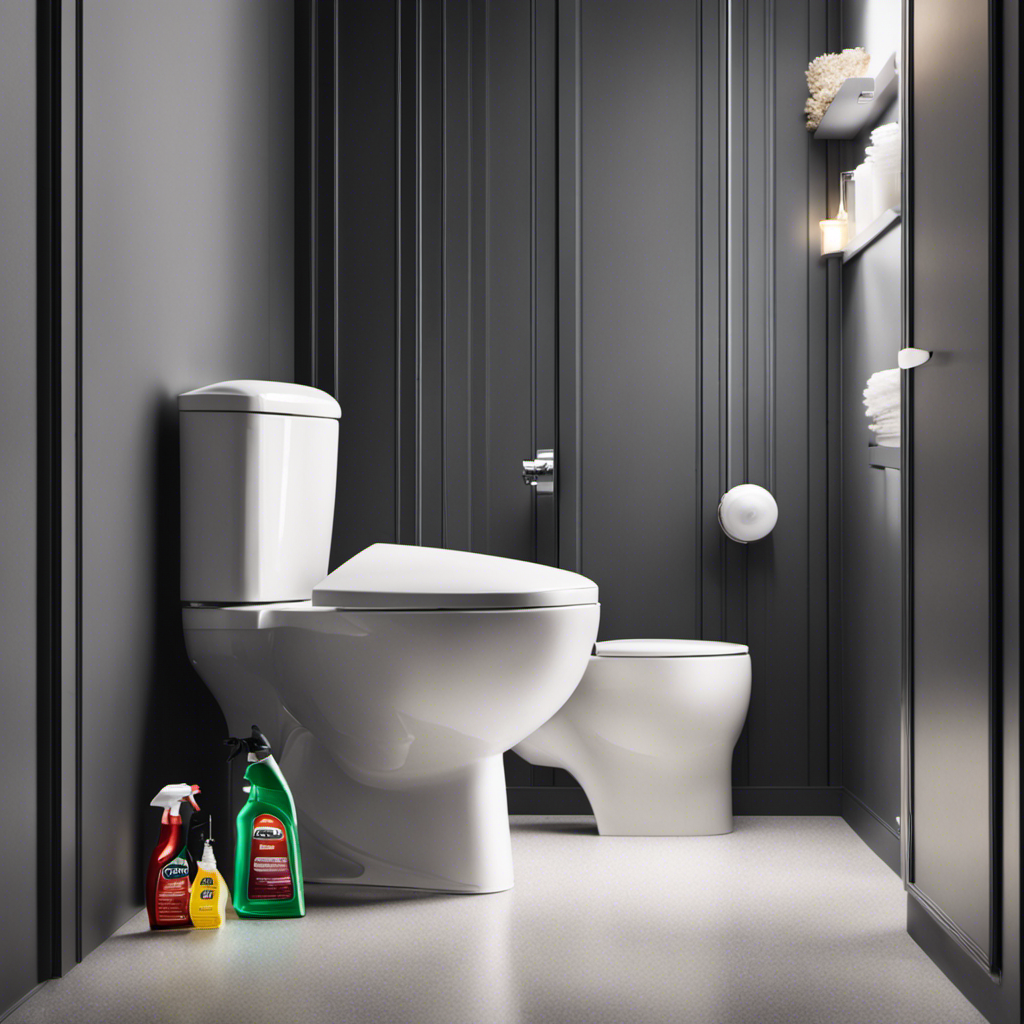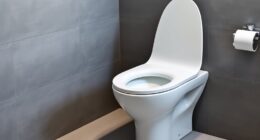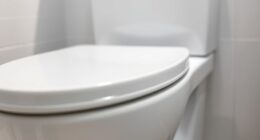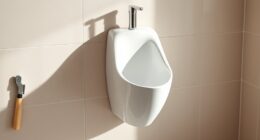Have you ever wondered why your toilet sometimes makes strange noises or smells unpleasant?
Well, I’ve got the solution for you. In this article, I’ll show you how to vent a toilet properly to eliminate those issues once and for all.
With just a few tools and materials, you’ll be able to install a toilet vent system in no time.
Say goodbye to plumbing problems and hello to a fresh and quiet bathroom experience.
Let’s get started!
Key Takeaways
- Toilet venting systems remove sewer gases and odors from the plumbing system.
- Proper venting maintains the water seal in the toilet bowl and promotes efficient wastewater flow, reducing the risk of clogs.
- The benefits of proper venting include improved plumbing performance, odor control, and a healthier living environment.
- Common mistakes to avoid when venting a toilet include using incorrect size and length of vent pipe, not following toilet venting regulations, and not addressing toilet venting problems promptly.
Understanding Toilet Venting Systems
To understand toilet venting systems, you need to know how they work and why they are important for proper plumbing functionality. In accordance with toilet venting regulations, these systems play a crucial role in maintaining a healthy and efficient plumbing system.
The primary function of a toilet venting system is to remove sewer gases and odors from the plumbing system by allowing fresh air to enter the pipes. This prevents the build-up of pressure, ensuring smooth drainage and preventing blockages.
Proper toilet venting also helps to maintain the water seal in the toilet bowl, preventing unpleasant smells from entering the bathroom. Additionally, it promotes the efficient flow of wastewater, reducing the risk of clogs and backups.
Overall, the benefits of proper toilet venting are improved plumbing performance, odor control, and a healthier living environment.
Tools and Materials Needed for Toilet Venting
You’ll need a few tools and materials to properly install the venting system for your toilet. Here is a list of essential items:
| Tools | Materials | Regulations |
|---|---|---|
| Pipe cutter | PVC pipes | Follow local codes |
| Wrench | Vent pipe | Maintain proper slope |
| Screwdriver | Vent cap | Distance from windows/doors |
| Hacksaw | Pipe fittings | Maintain required size |
| Drill | Pipe glue | No shared vents |
Proper toilet venting is crucial for a well-functioning plumbing system. It ensures the removal of harmful gases and odors from the toilet, preventing them from entering your home. In addition to complying with toilet venting regulations, there are several benefits to installing a venting system correctly. It helps maintain the proper pressure in the drainage system, prevents clogs, and reduces the risk of sewer gas buildup. By investing in the right tools and materials and following the necessary regulations, you can ensure a reliable and efficient toilet venting system that keeps your bathroom fresh and your plumbing in good condition.
Step-by-Step Guide to Installing a Toilet Vent
Start by gathering the necessary tools and materials for the installation process. When it comes to toilet venting, proper installation is crucial for maintaining a healthy and functional plumbing system. Here are some tips to ensure a successful toilet venting installation.
First, make sure you have a vent pipe of appropriate size and length. This will allow for proper airflow and prevent any blockages. Additionally, a vent cap and flashing should be included to protect the vent pipe from weather damage.
Next, gather a vent pipe cutter, pipe wrench, and a drill with a hole saw attachment. These tools will help you cut and install the vent pipe in the desired location. Don’t forget safety equipment like gloves and goggles to protect yourself during the process.
Proper toilet venting is essential as it prevents sewer gases from entering your home and maintains the proper pressure within the plumbing system. Without proper venting, you may experience unpleasant odors, slow draining, or even clogs.
In the next section, we will discuss some common mistakes to avoid when venting a toilet. By understanding these errors, you can ensure a successful installation and avoid potential issues down the line.
Common Mistakes to Avoid When Venting a Toilet
One common mistake to avoid when venting a toilet is not using the appropriate size and length of vent pipe.
It is crucial to follow toilet venting regulations and ensure proper ventilation for your toilet. Venting a toilet is important because it allows the release of sewer gases and prevents pressure buildup in the plumbing system.
The size and length of the vent pipe directly impact the effectiveness of the ventilation. Using an undersized or short vent pipe can lead to inadequate ventilation, causing foul odors, slow draining, or even backups in the toilet.
It is essential to consult local building codes and guidelines to determine the appropriate size and length of the vent pipe for your specific toilet installation. By adhering to these regulations, you can ensure proper toilet ventilation and maintain a healthy and functional plumbing system.
Troubleshooting Toilet Venting Issues
If you’re experiencing foul odors or slow draining in your bathroom, it could be a result of inadequate ventilation in your plumbing system. Toilet venting problems can cause these issues and it’s important to recognize the signs of a blocked toilet vent.
One of the most common signs is a gurgling sound coming from the toilet when you flush. This indicates that air is not properly flowing through the vent, causing the water to struggle to drain.
Another sign is a foul odor coming from the toilet or bathroom. This odor occurs when gases are trapped in the plumbing system due to a blocked vent.
If you notice any of these signs, it’s crucial to address the toilet venting problem as soon as possible to prevent further issues with your plumbing system.
Frequently Asked Questions
Can I Use the Existing Vent Pipe for My Toilet Venting System?
Yes, you can use the existing vent pipe for your toilet venting system. However, it is important to ensure that the vent pipe meets the necessary requirements for proper ventilation and follows best practices for toilet vent installation.
What Type of Insulation Should I Use for the Toilet Vent Pipe?
When it comes to toilet vent pipe insulation, it’s important to choose the proper materials. The right insulation can help prevent condensation and maintain proper air flow in the venting system.
Can I Install a Toilet Vent Without Accessing the Attic?
Yes, you can install a toilet vent without accessing the attic. There are alternatives to attic venting, such as venting through the wall. I can provide detailed information on how to vent a toilet through the wall.
How Far Can the Toilet Vent Pipe Be Extended Horizontally?
When considering the placement of the toilet vent pipe, it is important to adhere to the regulations set forth. It is crucial to understand the maximum allowable horizontal extension for proper ventilation.
Can I Connect Multiple Toilets to the Same Vent Pipe?
Yes, you can connect multiple toilets to the same vent pipe. It is important to ensure that the venting system is properly designed and sized to accommodate the additional fixtures.
Conclusion
In conclusion, understanding how to vent a toilet is crucial for maintaining a properly functioning plumbing system. By following the step-by-step guide provided, homeowners can ensure that their toilets are properly vented, reducing the risk of clogs and unpleasant odors.
It is interesting to note that according to a study by the National Association of Home Builders, a properly vented toilet can increase water efficiency by up to 20%. Therefore, investing time and effort into venting a toilet can not only improve its performance but also save water and reduce utility bills.
